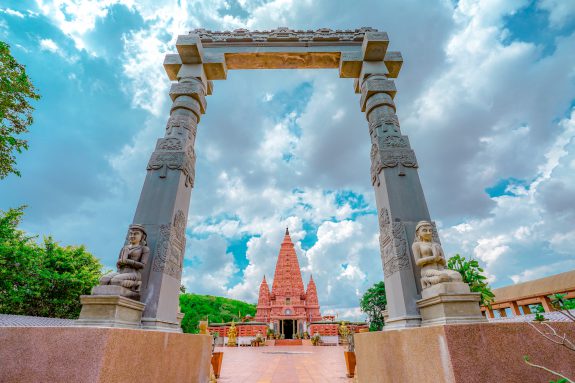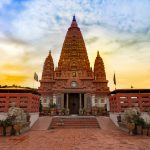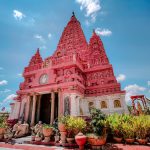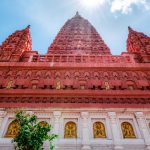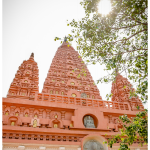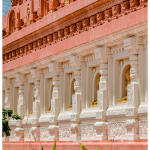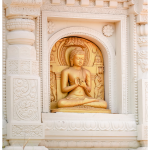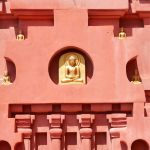Zone 5
Sri Buddha Gaya Pagoda
The second highest point of the Monastery, this zone features 3 not-to-miss attractions:
Thorana Gateway
Sri Buddha Gaya Pagoda
Made up of multiple floors, Sri Buddha Gaya Pagoda replicates nearly every detail of the original one in Bodh Gaya India--but with a few notable differences.
First, whereas as the original in India is fifty-six meters tall, the replicated pagoda here is twenty-eight meters high. Its height corresponds to the total number of Buddhas who have reached Nirvana. Second, the tip of the pagoda at the Forest Monastery of Her Royal Highness is made of bronze to reflect the historical shape, material, and design of the authentic one in India. The tip of the original pagoda in Bodh Gaya has now been changed to gold. Finally, the small statues decorating the exterior of the Pagoda at the Forest Monastery of Her Royal Highness reflect a unique integration of Thai and Indian art; they don’t seem exactly Thai or Indian, making them distinct.
The first floor of Sri Maharaj Pagoda features a replica of Phra Buddha Metta Santipap (the Buddha of Mercy and Peace), the principal Buddha inside Buddha Gaya Pagoda in India. The replicated statue here retains all traits of the original, except for its size, composition, color, and figures at the base.
The second floor features Phra Sri Ariya Maettrai Sakayasingh (Maitreya), Buddha of the future. He will emerge after the age of the current Buddha comes to an end. This floor opens out to a scenic 360 degree terrace, where you can see beautiful fields and forest from the second highest point of Bodhisattva Mountain.
Perimeter of Sri Buddha Gaya Pagoda
Thorana Gateway
Sri Buddha Gaya Pagoda
Made up of multiple floors, Sri Buddha Gaya Pagoda replicates nearly every detail of the original one in Bodh Gaya India--but with a few notable differences.
First, whereas as the original in India is fifty-six meters tall, the replicated pagoda here is twenty-eight meters high. Its height corresponds to the total number of Buddhas who have reached Nirvana. Second, the tip of the pagoda at the Forest Monastery of Her Royal Highness is made of bronze to reflect the historical shape, material, and design of the authentic one in India. The tip of the original pagoda in Bodh Gaya has now been changed to gold. Finally, the small statues decorating the exterior of the Pagoda at the Forest Monastery of Her Royal Highness reflect a unique integration of Thai and Indian art; they don’t seem exactly Thai or Indian, making them distinct.
The first floor of Sri Maharaj Pagoda features a replica of Phra Buddha Metta Santipap (the Buddha of Mercy and Peace), the principal Buddha inside Buddha Gaya Pagoda in India. The replicated statue here retains all traits of the original, except for its size, composition, color, and figures at the base.
The second floor features Phra Sri Ariya Maettrai Sakayasingh (Maitreya), Buddha of the future. He will emerge after the age of the current Buddha comes to an end. This floor opens out to a scenic 360 degree terrace, where you can see beautiful fields and forest from the second highest point of Bodhisattva Mountain.
